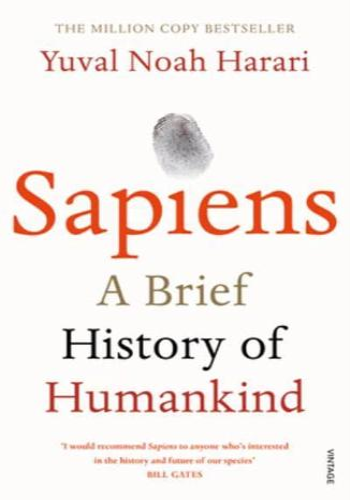Chapter 1: A Day in the Life of Adam and Eve
* Summary: Describes the daily life of forager-hunter societies, such as the Hadza of Tanzania. These societies lived in small, nomadic bands, with little social hierarchy or division of labor.
* Real Example: A typical day for a Hadza woman would involve gathering berries, digging up roots, and caring for children. A man would hunt game, construct tools, and protect the group.
Chapter 2: The Cognitive Revolution
* Summary: Explores the origins of language, art, and abstract thought around 70,000 years ago. This "cognitive revolution" allowed humans to communicate more effectively, share knowledge, and organize into larger groups.
* Real Example: The discovery of cave paintings at Lascaux and other sites suggests that early humans were capable of sophisticated symbolic thought and artistic expression.
Chapter 3: The Agricultural Revolution
* Summary: Discusses the transition from foraging to farming around 10,000 years ago. This led to an explosion in population and the rise of cities and civilizations. However, it also brought new challenges, such as disease, inequality, and environmental degradation.
* Real Example: The domestication of wheat in the Fertile Crescent allowed humans to establish permanent settlements and accumulate surplus food.
Chapter 4: The Unification of Humankind
* Summary: Explores the process by which humans conquered all other animal species and came to dominate the Earth. This was due to a combination of factors, including language, cooperation, and technology.
* Real Example: The invention of the wheel, sail, and writing empowered humans to travel long distances, trade, and establish empires.
Chapter 5: The Scientific Revolution
* Summary: Traces the origins of modern science from the Renaissance to the Enlightenment. This intellectual revolution emphasized observation, experimentation, and the rejection of dogma.
* Real Example: The discoveries of Copernicus, Galileo, and Newton laid the foundation for modern physics and astronomy.
Chapter 6: The Industrial Revolution
* Summary: Explores the transformation of human society from agricultural to industrial in the 18th and 19th centuries. This led to mass production, urbanization, and a rapid increase in wealth and inequality.
* Real Example: The development of the steam engine and the factory system revolutionized production and transportation.
Chapter 7: The Information Revolution
* Summary: Discusses the impact of computers, the internet, and artificial intelligence on human society. This revolution is still unfolding, but it has the potential to transform our lives in unprecedented ways.
* Real Example: The rise of social media has created new opportunities for communication and collaboration, but it has also raised concerns about privacy and misinformation.
Chapter 8: The Sapiens Moment
* Summary: Reflects on the unique position of humans as the only species that has achieved such a dominant position on Earth. Explores the challenges and responsibilities that come with this power.
* Real Example: The threat of climate change is an example of a global challenge that requires international cooperation and a re-evaluation of our place in the ecosystem.







